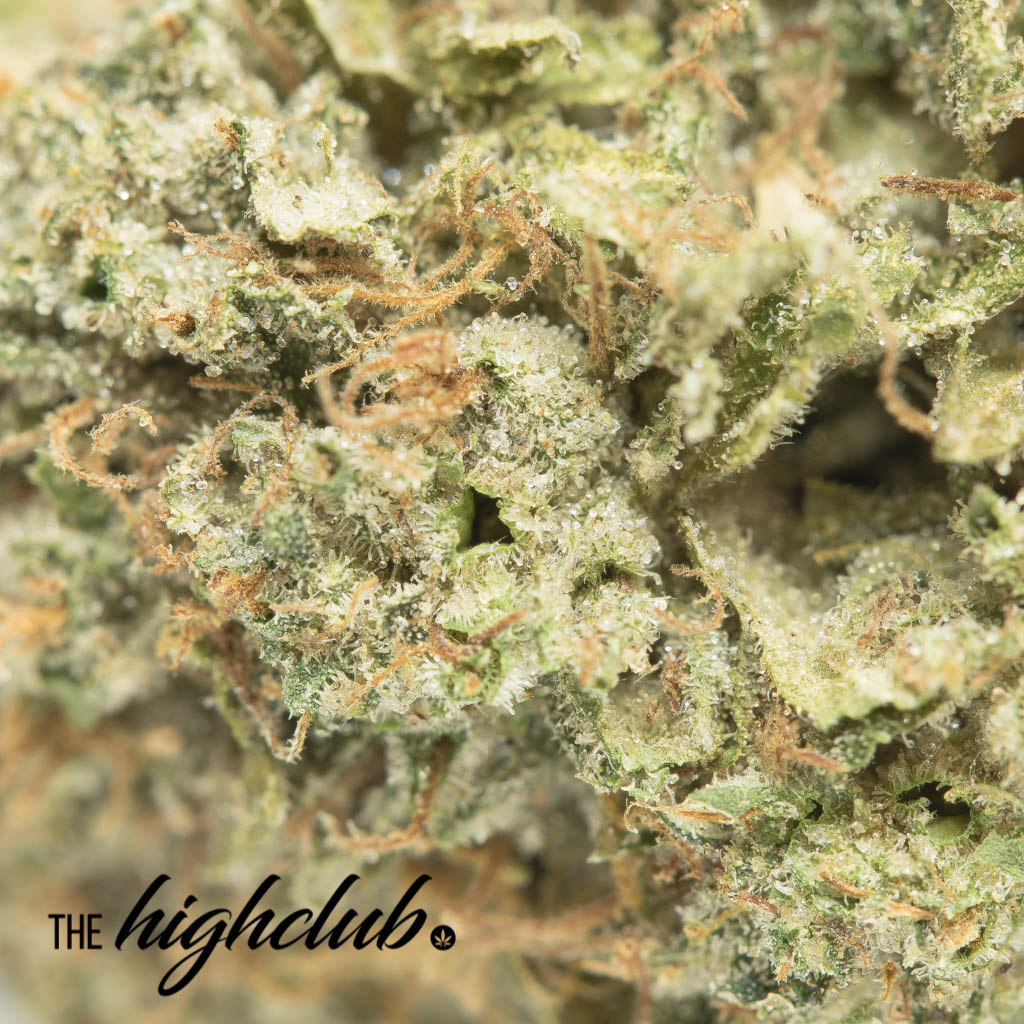Uncategorized
The Difference Between Indica And Sativa. Do they matter?
The terms indica and sativa are both widely used and hotly contested. Whether you’re new to weed or a long-time cannabis consumer, it’s highly likely you’ve heard about the supposed “body high” of an indica, the “cerebral rush” of a sativa, or the varied effects of a hybrid.
These terms are hard to miss. Browse any well-stocked dispensary shelf and you’ll find all types of cannabis strains, or cultivars, featuring one of these three labels. But how helpful are they and when can indica vs sativa be misleading?
If you’re ready to learn about the controversy surrounding indica and sativa strains, the origin of these terms, and whether they’re still valuable to cannabis consumers, welcome. This is the guide for you.
Where do indica and sativa come from?
To understand the origins of the indica vs sativa debate, we need to take a quick dip into botanical history. Indica and sativa have been part of the cannabis lexicon since the mid-1700s. In 1753, Swedish botanist Carl Linnaeus identified psychoactive cannabis plants as Cannabis sativa in his work Species Plantarum. Thirty-two years later, French biologist Jean-Baptiste Lamarck identified Cannabis indica as a different species while observing the physical characteristics of India’s cannabis plants. Lamarck argued that C. indica plants have dark green, wide leaves compared to C. sativa leaves, which are light and narrow.
In 1930, Russian botanist Dmitrij Janischewsky identified Cannabis ruderalis as the third subspecies. This time, it was not a result of unique physical expressions but rather unique traits in the plant’s flowering cycle. Janischewsky noticed that while most cannabis plants begin to flower as a result of changes in the available sunlight, ruderalis plants automatically began to flower 20 to 40 days after sprouting.
Now, you probably haven’t heard your local budtender suggest a great new ruderalis strain. That’s because botanists never quite agreed on a definitive cannabis taxonomy.
Another pivotal moment for our current taxonomy came in the mid-to-late 1970s when American biologists Loran Anderson and Richard E. Schultes argued there are three cannabis species: C. sativa, C. indica, and C. ruderalis. Departing somewhat from Linnaeus and Lamarck, Anderson and Schultes characterized a distinction between plants based on their ratio of the cannabinoids THC and CBD. They observed a difference between cultivars high in THC with low CBD (C. sativa), those with high THC and CBD (C. indica), and those with a high CBD to THC ratio (C. ruderalis).
In 1976, around the time Schultes and Anderson were making their claims, Ernest Small and Arthur Cronquist argued the existence of only one central cannabis species, which they labeled C. sativa. Human intervention, they contended, subsequently created two subspecies: C. sativa (low-THC hemp) and C. indica (high-THC cannabis cultivated for intoxication).
Today, we’re still making cannabis discoveries that reshape our taxonomic framework. Since the mid-2000s, botanists have diverted from Small and Cronquist’s taxonomy, arguing that sativa and indica subspecies may have predated human intervention. We’ve also begun to recognize the importance of terpenes in shaping the cannabis experience — something previous taxonomists never took into account.
Bottom line: these terms were created for botanists and not pharmacologists. Botanists use these terms to classify plants on the basis of shared characteristics, not on their effects on the human body.
How are these terms used now?
Almost immediately upon their inception, the terms indica and sativa were used to identify cannabis plants based on the shape and size of their main leaves and the amount of fiber they produced. Today’s cultivators use them for roughly the same purpose: separating plants into indica and sativa according to their growth traits and physical makeup.
Growers use indica, sativa, and hybrid to categorize plants based on their growth traits and resulting chemical profiles. Retailers may then market cannabis to consumers by categorizing strains under these terms — however misleading those categorizations may be. In other words, indica and sativa are still around because they still serve a purpose for cultivators, and old habits die hard among retailers.
Bottom line: if the indica and sativa taxonomy is for anyone, it’s for the cultivators. Unsuspecting consumers, on the other hand, may find them a bit misleading. Human intervention has dramatically changed the chemical makeup of the cannabis plant since the days of Linnaeus and Lamarck. And as we’ll learn, the effects of indica and sativa plants in the 1700s probably aligned more closely with their physical classification than they do today.
What are the differences between indica and sativa?
The real difference between today’s indica and sativa plants is their observable traits during the cultivation cycle. Indica plants tend to grow short with thick stems and broad, deep-green leaves. They also have short flowering cycles and grow sufficiently in cold, short-season climates. Sativa plants have longer flowering cycles, fare better in warm climates with long seasons, and usually grow taller with light-green, narrow leaves.
For the last 50 years of cannabis cultivation, crossbreeding has been the name of the game. As a result, there’s virtually no such thing as a pure indica or sativa anymore. Every flower you’ve ever come in contact with has most likely been a hybrid of some sort. Classifying a particular cultivar or strain as indica or sativa usually means that it tilts to one side or the other of the indica-sativa spectrum.
Sativa vs. indica effects
The indica vs. sativa framework has drawn controversy — and for good reason. When researching strains online, you’ll likely see sativas described as cerebral, heady, uplifting, and energizing while indicas are described as relaxing, sedating, full-bodied, and stoney. It’s still perfectly valid to describe effects as sativa-like or indica-like so long as we remember that sativa- or indica-like effects don’t necessarily coincide with a plant’s sativa or indica lineage.
Hybrid strains have become as prominent as indicas and sativas, if not more so. Depending on your perspective, the hybrid term can either complicate or simplify matters. While hybrids certainly present a more nuanced taxonomic reality, they do not provide a label that adequately indicates the effects that a user can expect from a cultivar. This is especially true as we recognize how differently our bodies react to cannabis.
Ever settle in to relax with some indica, only to find yourself in a high-energy cerebral haze? Or, have you tried sativa-dominant strains you heard were great for productivity and ended up in a prolonged, full-body couchlock? The truth is, you can’t always rely on your body to receive indica- or sativa-like effects from indica or sativa flower. You and your friend might smoke the exact same bud and have two distinct experiences.
The good news is that cannabis marketing is catching up to reality. More and more cannabis products are labeled hybrid because that is the more accurate descriptor. Technically. all modern cultivars are hybrids, but the plants we officially classify as hybrids are the intentional crossbreeds of indicas and sativas designed to produce specific qualities and effects. Often, budtenders recommend hybrids for their highly specialized effects, flavors, and aromas.
Bottom line: indica and sativa may be useful adjectives to describe certain sets of effects, but don’t count on products with those labels to consistently deliver those effects.
How do indicas and sativas change your high?
The indica vs. sativa = relaxation vs. exhilaration paradigm is clearly outdated if not totally inaccurate. So where does that leave us? What relevance, if any, do the terms indica and sativa have, and what effect will they have on your high?
The answer isn’t as hopeless (or as clear-cut) as you might think. Each strain produces an effect as individual as a cannabis user, but that doesn’t mean you can’t make truly educated decisions about which strains you’re going to try.
The effects you experience from cannabis strains are much more directly tied to cannabinoids and terpenes. THC, the dominant cannabis compound, is just one of several cannabinoids found in the cannabis plant. Each cultivar has its own cannabinoid makeup and accompanying effect.
On the adult-use market, the most popular strains tend to have some of the highest levels of THC content. Terpenes, the organic compounds responsible for a plant’s flavors and aromas, greatly influence the character and effect a cannabis plant will produce, as well as the potential medicinal benefits. The labels indica and sativa were established centuries before we realized how integral terpenes were to the overall effects of a given cultivar.
Knowing the difference between indica-like or sativa-like effects is a great starting point. But when it comes to choosing a cannabis product, you’ll be able to make much more educated decisions once you start paying attention to the cannabinoid and terpene content of each product. Shopping at licensed retailers that provide detailed lab results makes it easy.
You can also see if the flower you’re interested in buying passes the smell test. Does it smell good to you? If so, that’s a good indication your body may respond well to the dominant terpenes.
As always, knowledge comes with experience. Everyone’s body reacts differently to external influences. All it takes is experience and the right information to know what works for you. Ultimately, you are your own best resource for determining which cannabis products will deliver the effects you seek.
Bottom line: learn what cannabinoid and terpene profiles work best for you through trial and error. To make the process more efficient, keep a record of what you’ve tried and enjoyed or didn’t enjoy.
Frequently asked questions
Is sativa an upper or downer?
Sativas are often described as cerebral, heady, uplifting, and energizing while indicas are described as relaxing, sedating, full-bodied, and stoney. However, this does not mean flower labeled as sativa is guaranteed to leave you feeling energized and uplifted.
Is there really a difference between indica and sativa?
Physically, yes. These terms were created to help botanists classify plants on the basis of physical characteristics. That does not directly translate into distinct effects on the human body, however.
How does indica make you feel?
That depends on a host of factors. The truth is, you can’t always rely on your body to experience indica- or sativa-like effects from indica or sativa flower. You and your friend might smoke the exact same bud and have two very different experiences. In addition, it’s unlikely that the indica strains you find in dispensaries today are true indicas. Technically all modern cultivars are hybrids, which are the crossbreeds of indicas and sativas designed to produce specific qualities and effects. Hybrids are cultivated to have specialized effects, flavors, and aromas, so it’s worth talking to your budtender about what you’re looking to experience.
Article Via : Weedmaps
Image Used For Header: Thehighclub.biz

